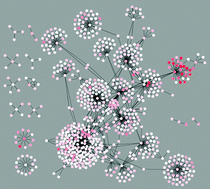Network inference and network response identification: moving genome-scale data to the next level of biological discovery
Abstract
The escalating amount of genome-scale data demands a pragmatic stance from the research community. How can we utilize this deluge of information to better understand biology, cure diseases, or engage cells in bioremediation or biomaterial production for various purposes? A research pipeline moving new sequence, expression and binding data towards practical end goals seems to be necessary. While most individual researchers are not motivated by such well-articulated pragmatic end goals, the scientific community has already self-organized itself to successfully convert genomic data into fundamentally new biological knowledge and practical applications. Here we review two important steps in this workflow: network inference and network response identification, applied to transcriptional regulatory networks. Among network inference methods, we concentrate on relevance networks due to their conceptual simplicity. We classify and discuss network response identification approaches as either data-centric or network-centric. Finally, we conclude with an outlook on what is still missing from these approaches and what may be ahead on the road to biological discovery.


 Please wait while we load your content...
Please wait while we load your content...